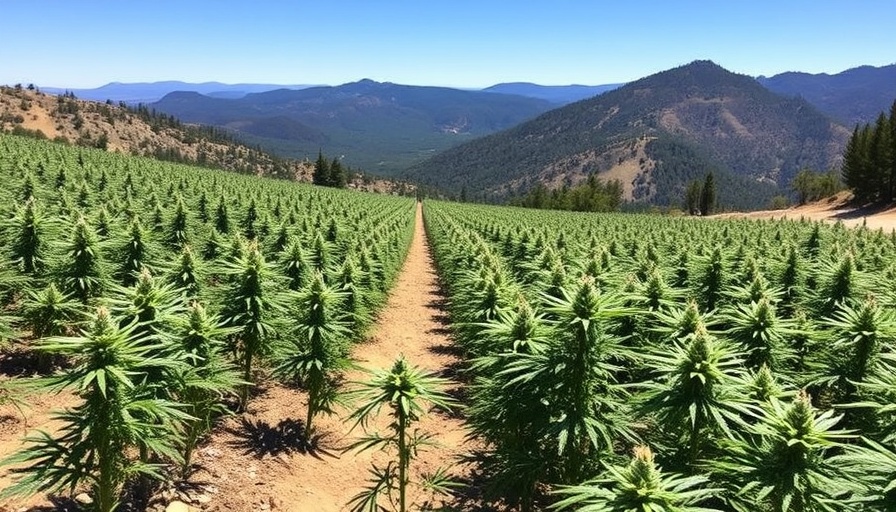
The Battle Against Illegal Marijuana Cultivation in California’s Majestic Parks
The beauty of Sequoia National Park, known for its towering giant sequoias, has been marred recently by illegal activities involving marijuana cultivation. In a significant operation, park rangers successfully removed approximately 2,377 marijuana plants and 2,000 pounds of trash, including hazardous chemicals from a site that spanned about 13 acres.
This site, discovered and raided in 2024, showcased the adverse consequences of illegal farming practices facilitated by the ongoing black market for marijuana. Despite marijuana being legalized in California, strict regulations surrounding its production have created a booming illegal market that has led to ecological devastation.
The Environmental Toll of Marijuana Cultivation
The repercussions of such illegal activities extend beyond mere plant removal. The National Park Service (NPS) reported that significant environmental damage occurred at the site, including disruptions to the natural flow of water from a nearby creek. It was found that the cultivation practices diverted water essential for wildlife and vegetation, leading to a stark increase in water scarcity for local ecosystems.
Each marijuana plant can consume up to six to eight gallons of water daily, which is particularly damaging in California's already water-scarce regions. The presence of hazardous chemicals, such as Methamidophos, a banned insecticide, paints a grave picture of the toxic legacy left by illegal growing operations. Not only do these chemicals threaten the local wildlife, but they also potentially contaminate runoff water, further exacerbating the environmental crisis.
Historical Context of Drug Trafficking in National Parks
Over the past two decades, California's national parks have experienced significant challenges from drug trafficking organizations exploiting these protected lands for marijuana cultivation. According to the NPS, nearly 300,000 marijuana plants worth around $850 million have been eradicated from Sequoia and Kings Canyon national parks. Such figures underline the extensive scale of illegal activities that transpire within these natural sanctuaries.
Moreover, sites across Siskiyou County, characterized by unregulated pesticide usage, have suffered tremendously, illustrating a troubling trend. The once-rich biodiversity in these areas is losing its promise as species become increasingly scarce, as noted by local officials like Rick Dean, who commented on the alarming absence of wildlife in heavily trafficked regions.
Future Insights: The Path to Sustainability in Cannabis Production
As the legal landscape surrounding cannabis continues to evolve in California, it's crucial to advocate for a balanced approach that emphasizes sustainable practices in marijuana cultivation. Legal producers must adapt to stringent guidelines that protect not only the regulatory interests of the state but also the integrity of California's diverse ecosystems.
Engaging community stakeholders in these discussions can help pave the way towards a more sustainable future. By fostering transparency in cannabis production and encouraging environmentally-friendly practices, the state can mitigate the negative impacts witnessed in national parks.
Steps Forward: Community Involvement and Education
The fight against illegal marijuana operations in California's beautiful landscapes requires a collaborative effort. Community awareness and education about the environmental consequences of illegal cultivation can empower individuals to advocate for protection measures actively. Plus, informing potential buyers about the importance of supporting legally sourced marijuana can help diminish the black market's influence.
Community programs focused on preserving wildlife and natural habitats can serve as an effective tool in restoring balance to the ecosystem. Encouraging the local community to engage in park stewardship initiatives not only helps nourish the environment but also fosters a sense of ownership and responsibility among residents and visitors alike, creating champions for the parks who will work to protect their beauty and integrity.
In conclusion, recognizing the significant effects of illegal marijuana cultivation on both our national parks and local ecosystems is imperative. As we engage with these issues, it’s essential to support and advocate for forward-thinking solutions that prioritize sustainability over harm. Stay informed, get involved, and contribute to the preservation of our natural heritage.
 Add Row
Add Row  Add
Add 





Write A Comment